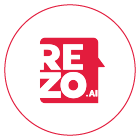
Different Types of Debt

Different Types of Debt


Debt is a concept that affects individuals and businesses alike. It is essential to understand the different types of debt to make informed financial decisions. In this blog, we will explore the world of debt, covering all the important debt categories, from secured and unsecured to corporate and individual debt. We'll also discuss strategies foon how borrowers can pay off debt and lenders can ensure their collection.
What is Debt?
Debt is a financial obligation that one party owes to another. When individuals or businesses borrow money, they enter into a debt arrangement with a lender or creditor. The borrower agrees to repay the borrowed amount, along with any interest or fees, over a specified period. Debt can arise from various sources, such as loans, credit cards, mortgages, or lines of credit.
Types of Debt

Debt can be broadly categorized into two types: secured debt and unsecured debt.
Secured Debt
Secured debt is backed by collateral, typically an asset that the borrower owns or purchases with the borrowed funds. Examples of secured debt include mortgages and auto loans. In these cases, lenders have a legal right to seize the collateral if the borrower fails to repay the debt. By having collateral as security, lenders face less risk, which often results in more favorable borrowing terms, such as lower interest rates. However, borrowers must be cautious as defaulting on secured debt can result in the loss of the collateral.
Unsecured Debt
Unlike secured debt, unsecured debt is not backed by collateral. Examples of unsecured debt include credit card debt, personal loans, and student loans. Lenders provide unsecured debt based on the borrower's creditworthiness, income, and financial history. Since there is no collateral involved, unsecured debt carries higher interest rates compared to secured debt. Lenders assume more risk with unsecured debt, as they have no specific assets to claim in case of default. Consequently, lenders may employ other means, such as legal action or debt collection agencies, to recover the outstanding debt.
Secured vs Unsecured Debt
Here's a table comparing the key differences between secured and unsecured debt:
Read More: Redesigning Debt Collection: Rezo’s Approach to NBFCs and LSPs’ Challenges with New RBI Guidelines
Revolving Debt
Revolving debt refers to a borrowing arrangement where you can repeatedly use and repay a set credit limit. This type of debt, commonly associated with credit cards or lines of credit, allows you to make flexible payments each month based on your outstanding balance. Interest rates on revolving debt can vary and are often higher than those associated with installment debt.
Installment Debt
Installment debt involves borrowing a predetermined amount and repaying it in fixed, scheduled installments over a defined period. This type of debt, such as mortgages, car loans, or student loans, typically comes with fixed interest rates that are generally lower than revolving debt. Monthly payments remain the same throughout the repayment period until the debt is fully paid off.
Revolving vs Installment Debt
Let's dive into revolving debt and installment debt and compare them side by side in a table:
Corporate Debt
Corporate debt refers to the financial obligations that companies incur to fund their operations and growth. There are several types of corporate debt, including bank loans, commercial paper, corporate bonds, and lines of credit. Companies may choose to take on debt to invest in new projects, expand operations, or manage cash flow. Corporate debt plays an essential role in the capital structure of businesses, and careful management is necessary to ensure financial health and leverage the advantages of debt financing.
Consumer Debt
Consumer debt encompasses the financial obligations that individuals incur for personal consumption. There are various types of consumer debt, such as credit card debt, personal loans, auto loans, and student loans. Consumer debt can be a useful tool for major purchases, education, or emergencies, but it is important to manage it responsibly. Understanding the nuances of different consumer debts can help individuals make informed borrowing decisions and work towards financial freedom.
How to Pay Off Debt
Paying off debt is a critical step towards achieving financial stability. Here are some strategies to help you effectively manage and pay off your debts:
- Prioritize and organize: Make a list of all your debts, including the outstanding balance, interest rates, and minimum monthly payments. Prioritize your debts based on interest rates or the snowball method, where you focus on paying off the smallest debts first.
- Create a budget: Develop a realistic budget that allocates a portion of your income towards debt repayment. Cut unnecessary expenses and redirect those funds towards paying off your debts.
- Debt consolidation: Consider consolidating multiple debts into a single loan with a lower interest rate. This simplifies repayment and potentially reduces your monthly payments.
- Negotiate with creditors: Reach out to your creditors and explore possibilities for negotiating lower interest rates or extended payment terms.
- Seek professional help: If your debt situation is overwhelming, consider consulting a financial advisor or a credit counseling agency that can provide guidance and help you create a debt repayment plan.
How can Lenders Ensure Timely Debt Collection?

For lenders, ensuring timely debt collection is integral to their financial stability. However, the process can be challenging and time-consuming. In order to overcome these hurdles, borrowers can implement effective debt collection strategies to maximize their chances of timely debt collection.
- Establishing clear communication and transparent terms with borrowers.
- Consistent follow-ups and reminders are key to keeping debt collection on track.
- Offering flexible repayment options can significantly aid in timely debt collection.
- By monitoring customer behavior and financial indicators, borrowers can identify potential red flags signaling a higher risk of delinquency or default.
How Rezo.ai Can Help
With its AI-powered capabilities, Rezo.ai offers several key features that enhance digital debt collection processes. These include:
1. Automated Follow-ups: Rezo.ai's automation capabilities enable borrowers to set up automated reminders and proactive follow-ups. By leveraging AI chatbots and virtual assistants, borrowers can efficiently schedule and send personalized reminders to borrowers at specific intervals, minimizing manual effort and maximizing response rates.
2. Predictive Analytics: Rezo.ai utilizes powerful data analytics tools to provide borrowers with actionable insights into customer behavior. By leveraging these insights, borrowers can proactively identify potential risks and make data-driven decisions to maximize timely debt collection.
3. Customized Repayment Plans: Rezo.ai's advanced algorithms can analyze individual borrower profiles and generate optimized repayment plans tailored to their financial capabilities. This personalized approach increases the likelihood of timely repayment and reduces the risk of default.
FAQs on Types of Debt
Frequently Asked Questions (FAQs)

Take the leap towards innovation with Rezo.ai
Get started now














